It’s that time of the year again! Time to start lugging all the boxes of Christmas decorations out and start decorating. Nothing quite rings in Christmas cheer like a house festooned with Christmas trees, tinsels, icicle lights, garlands, and silver bells. And of course, a dazzling Christmas wreath to adorn your front door! Dressing your door with a DIY Christmas wreath is just the kind of festive statement you need to give your holiday home that jolt of joy.
If you are looking for Christmas wreath ideas to spruce up your door or wall, here are some of the best types of plants that you can use for making your wreath. From berries, greens, cypress, fir, and hydrangea blooms, nature has so much to offer for your DIY Christmas wreath. So, go deck out your door with our wonderful Christmas wreath ideas.
Vines
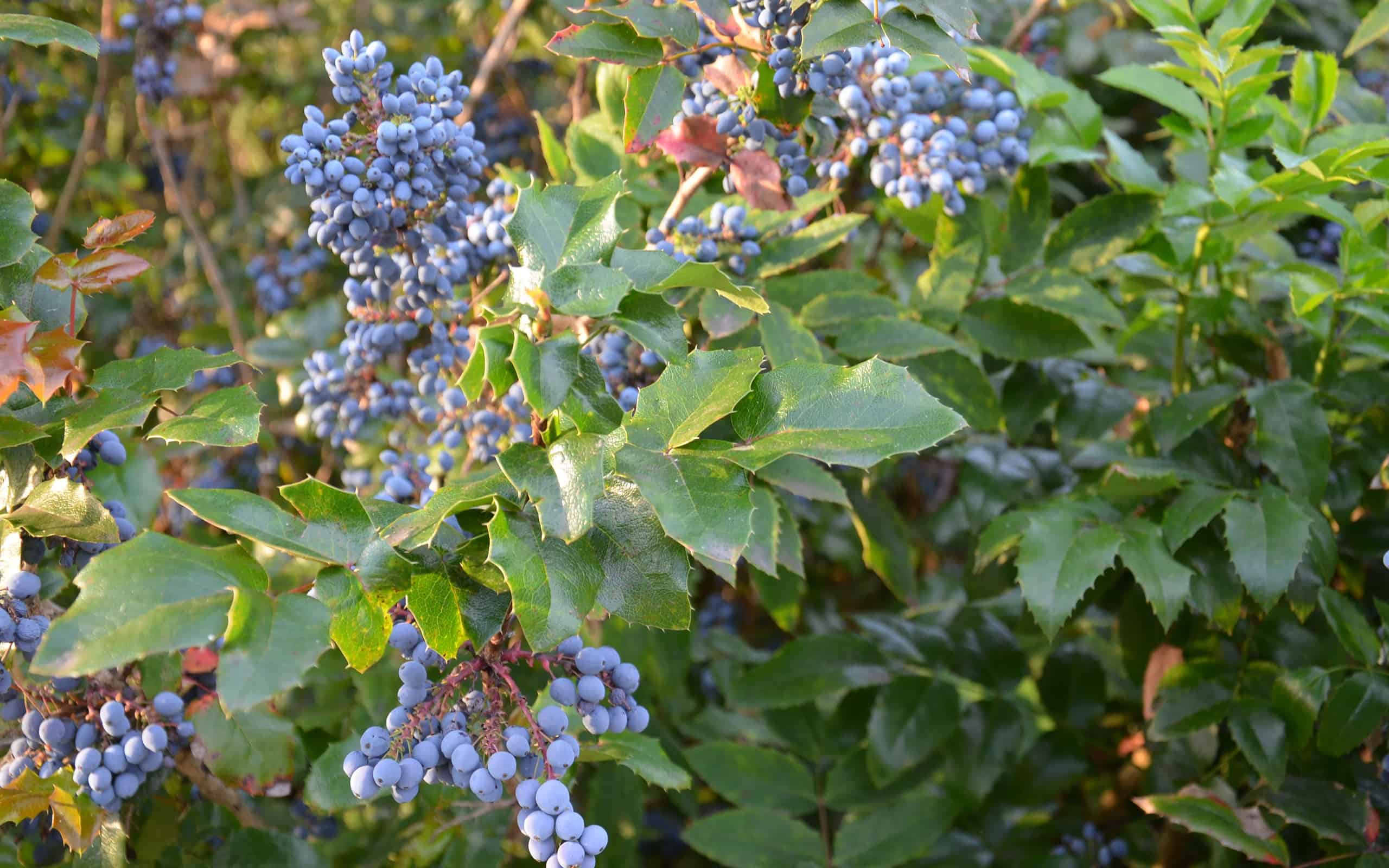
Twisted vine wreaths dressed in florals, dried citrus, or festive dry foliage can lend your door a beautiful, rustic look.
©Wirestock/ via Getty Images
If you are looking for Christmas wreath ideas, maybe try turning invasive vine into a beautiful holiday wreath. Twisted vines offer great accents to a holiday wreath. From the wild grapevine to wisteria, honeysuckle, and Virginia creepers, there are so many different kinds of vines that you could use to create your own DIY Christmas wreath.
Use them fresh or dried. If you are using old, dried vines, a quick soak in some warm water will make them more pliable to work with. Most woody vine wreaths are sturdy and will last you for years together.
Fir

Douglas firs are especially great for crafting your own DIY Christmas wreath because they hold their needles for a long time.
©Hugh K Telleria/Shutterstock.com
Firs are another favorite when it comes to classic holiday decorating. From the beautiful Fraser Fir and Concolor Fir to the traditional Balsam Fir or fragrant Douglas Fir, these evergreen branches are all just perfect for crafting a holiday wreath. Firs thrive best in hot, dry indoor conditions and will last several weeks if they are properly taken care of.
Spruce
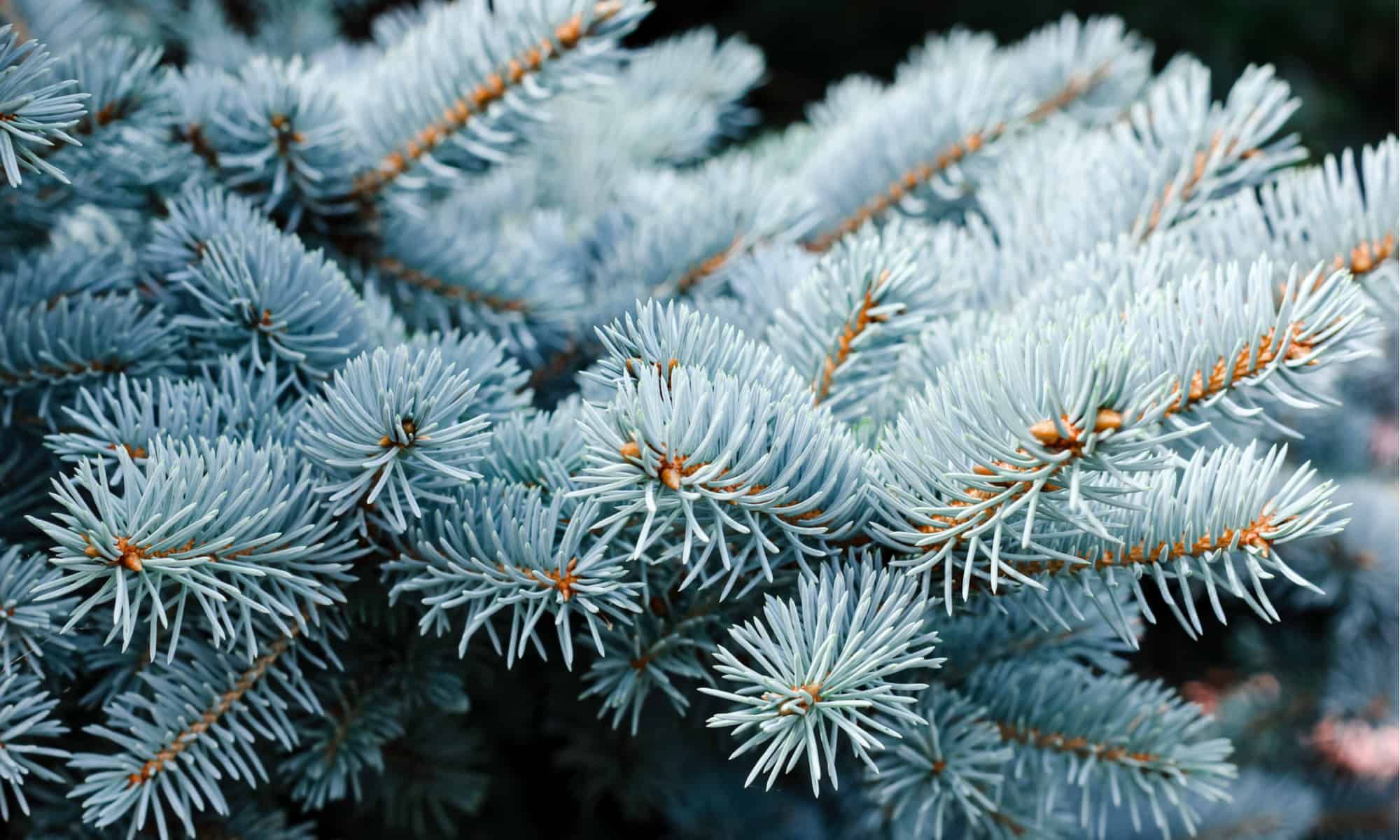
Blue spruce wreaths can add a touch of whimsy to your space and make for a stunning decorative piece.
©Tanya49/Shutterstock.com
The spruce is a classic for wreath decoration. Blue spruce, especially, has gorgeous silvery blue needles that will make your DIY Christmas wreath stand out from the crowd.
The only downside to using spruce though is that their needles will shatter if they are left in a warm place. So, you always want to place a spruce wreath outside or inside a cool covered porch.
Juniper
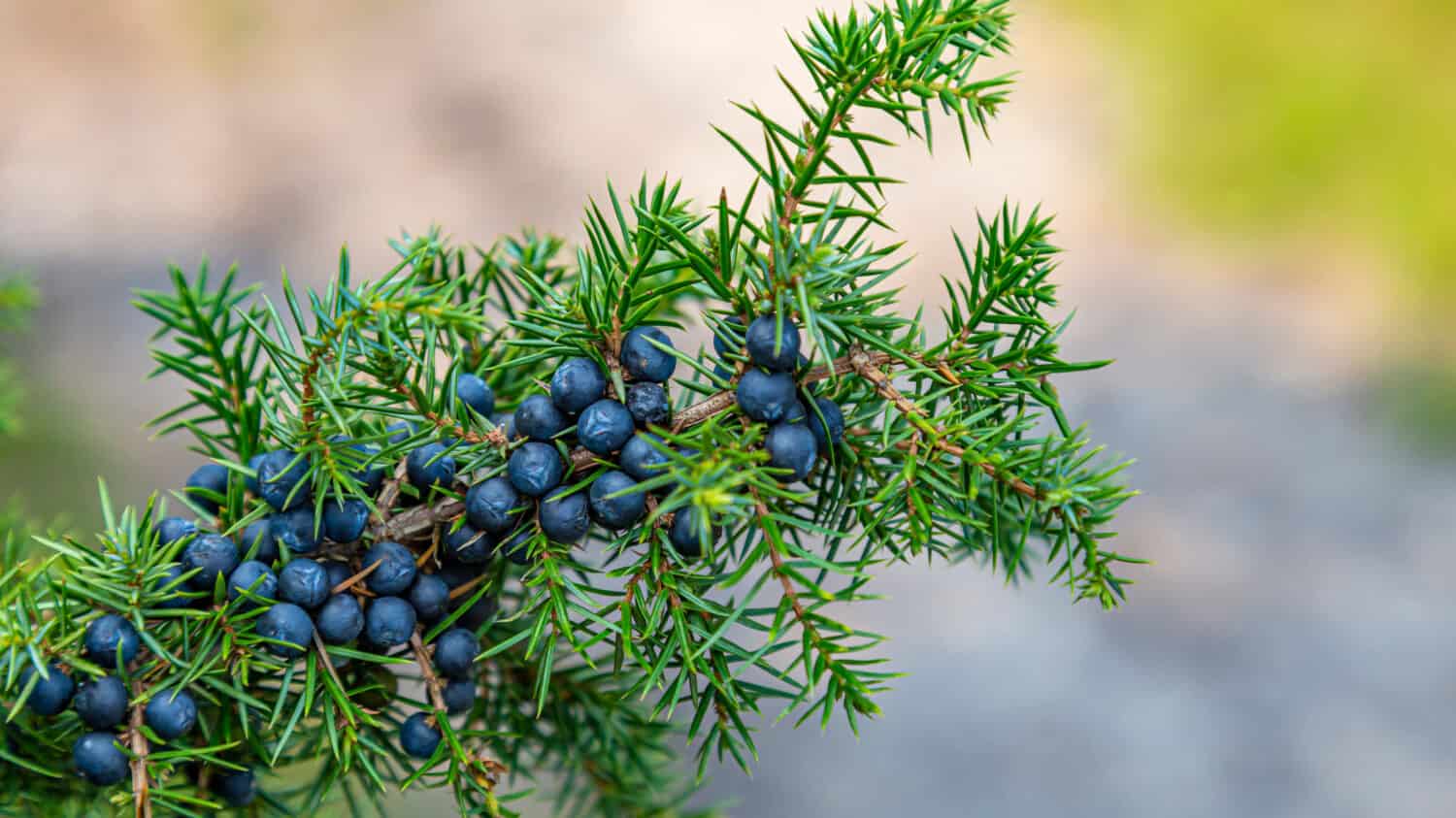
Simple and versatile, the gorgeous Junipers are perfect for creating an inviting display.
©INTREEGUE Photography/Shutterstock.com
If you are looking for ideas for an evergreen Christmas wreath, you just can’t go wrong with the brightness and warmth of Junipers. Commonly found in the eastern United States and the Rockies, Junipers have foliage that is fragrant and comes in tones of green and silver-blue.
Junipers have a better chance of thriving outside as their needles can turn brittle in the heat of your home.
Boxwood

Natural boxwood has timeless appeal and can really elevate your DIY Christmas wreath.
©iStock.com/coramueller
The lush, fragrant, densely foliated, and fine-textured foliage of boxwood has great appeal and is perfect for bringing a touch of nature’s elegance to your home. Snip off a few stems and soak them in water overnight and they are ready to use in your DIY Christmas wreath for your door, or the mantle piece.
Well-hydrated boxwood wreaths will last you anywhere between one to two months. Preserved boxwood wreaths, on the other hand, can last for up to four years if taken care of properly. While boxwood wreaths are beautiful, be warned that they can sometimes have an overwhelming musky odor that tends to put off some folks.
Holly
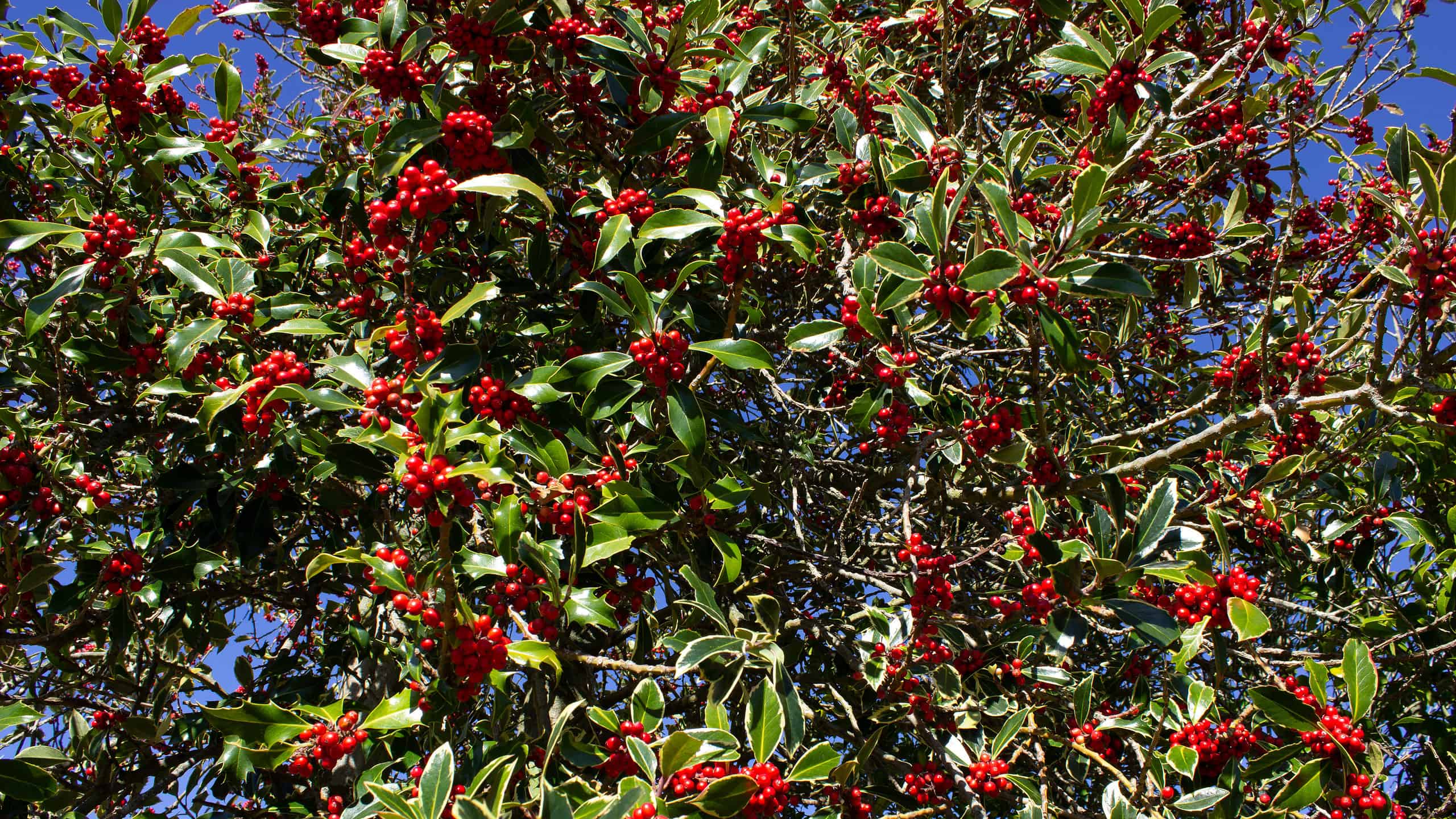
Holly wreaths are a true representation of the beauty of the holiday season!
©EveTravels/Shutterstock.com
What better way to brighten your door for Christmas than with traditional holly! Working with Holly can be tough though. It is very structured and spikey.
For making your own handmade holly wreath, a less prickly variety like the Buford Holly may be more suitable. The Buford variety is available throughout the South. However, you want to make sure you don’t expose the cuttings to frost or the berries and the leaves can go black.
Cedar
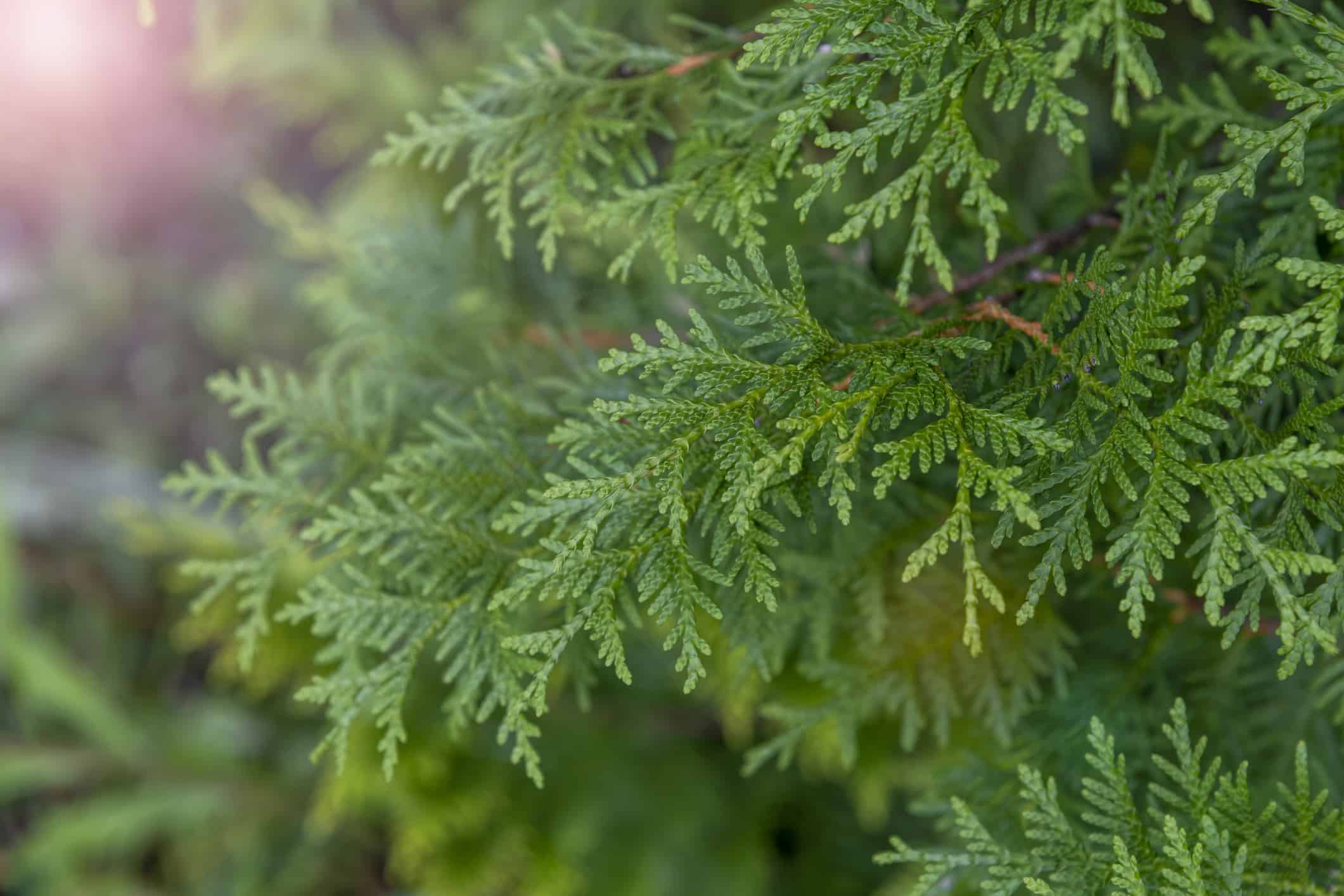
The natural texture and earthy tones of the evergreen cedar foliage and cedar cones are simply enchanting!
©iStock.com/Andrey Rykov
Another idea to make your own festive Christmas wreath is to use cedar. Cedar wreaths are elegant and timeless. Featuring soft, feathery foliage and an intoxicating woody fragrance, these evergreen trees are perfect for giving your big ol’ front door a warm, welcoming look. Making a cedar wreath is as simple as clipping a few cedar branches from a tree and tying them all together.
Cedar cones are a good addition to these feathery greens in your wreath. If you are using cedar cones, it would be a good idea to spray them with lacquer or acrylic to prevent the messy release of pollen into the air.
Magnolia
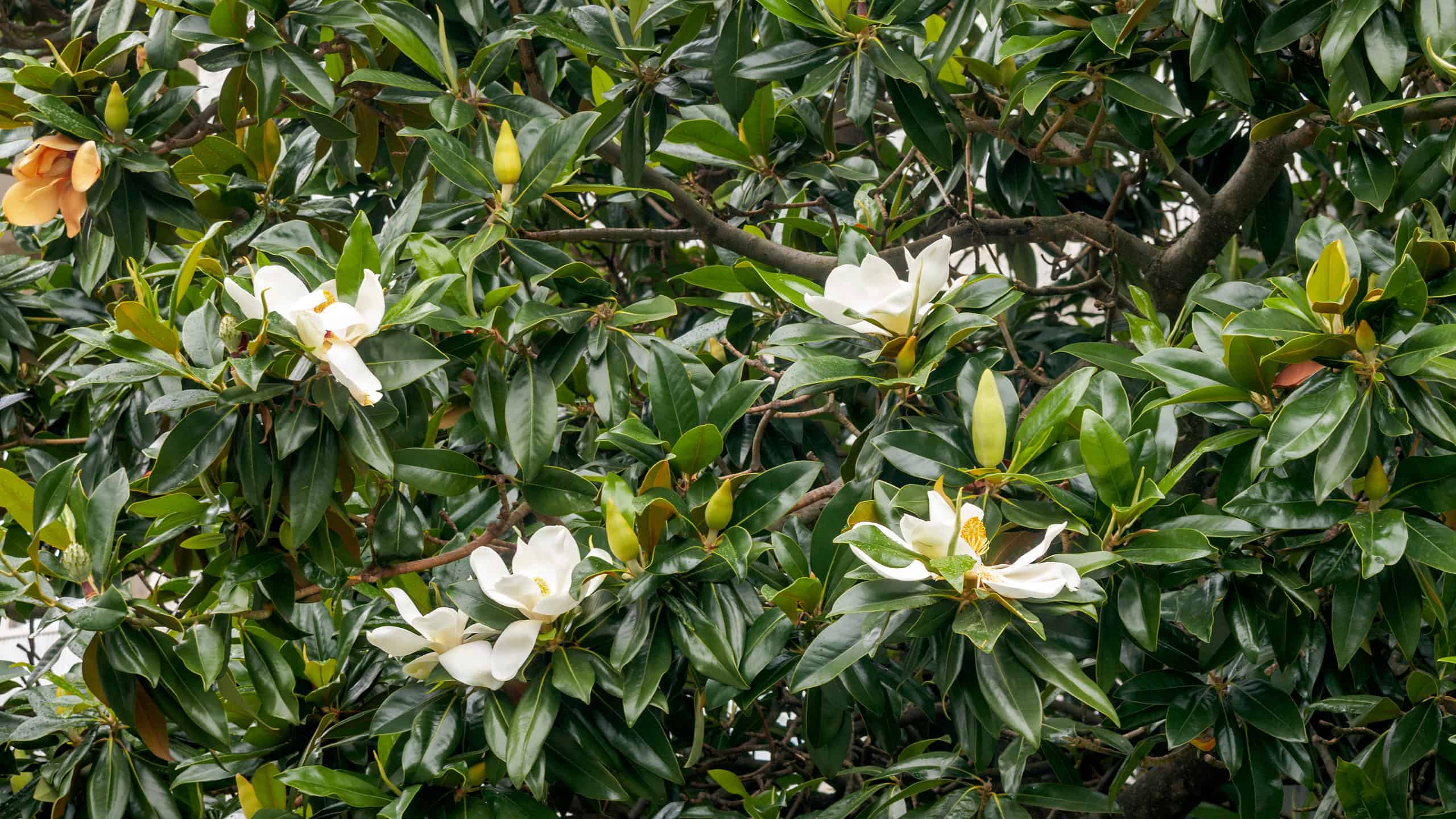
The brown and green color scheme of Magnolia foliage is so pretty, it will shine in any DIY Christmas wreath.
©Nick Pecker/Shutterstock.com
Freshly cut Magnolias make stunning holiday wreaths and have long been a symbol of the South. The deep green, glossy leaves with fuzzy brown undersides have great visual appeal and will render elegance and warmth to your front door, mantle, or porch.
Magnolia wreaths can thrive indoors or outdoors. The leaves of the Magnolia plant hold up well even with very little water. As they dry out, the leaves of this plant may start to curl up though.
Mountain Laurel

This one-of-a-kind greenery is the perfect Christmas wreath idea for creating a statement centerpiece for your mantle or door.
© lenic/Shutterstock.com
Mountain Laurel, an evergreen shrub with thick spreading branches is another great candidate to use for holiday greenery. As with most broad-leaved evergreens, they are best suited for the outdoors.
While mountain laurels can make beautiful, dreamy wreaths, these plants are poisonous so you want to use caution when you work with these plants.
Pine

Wreaths curated with pine are not just visually stunning, they will also withstand the test of time.
©Nikolay Kurzenko/Shutterstock.com
From the Virginia Pine to the White Pine, there are so many different varieties of this needled evergreen that you can use in your holiday arrangement. They have excellent needle retention and are long-lasting.
Pines are best suited for indoor display as they dry out slowly and generally do well in warm interior temperatures.
Smilax
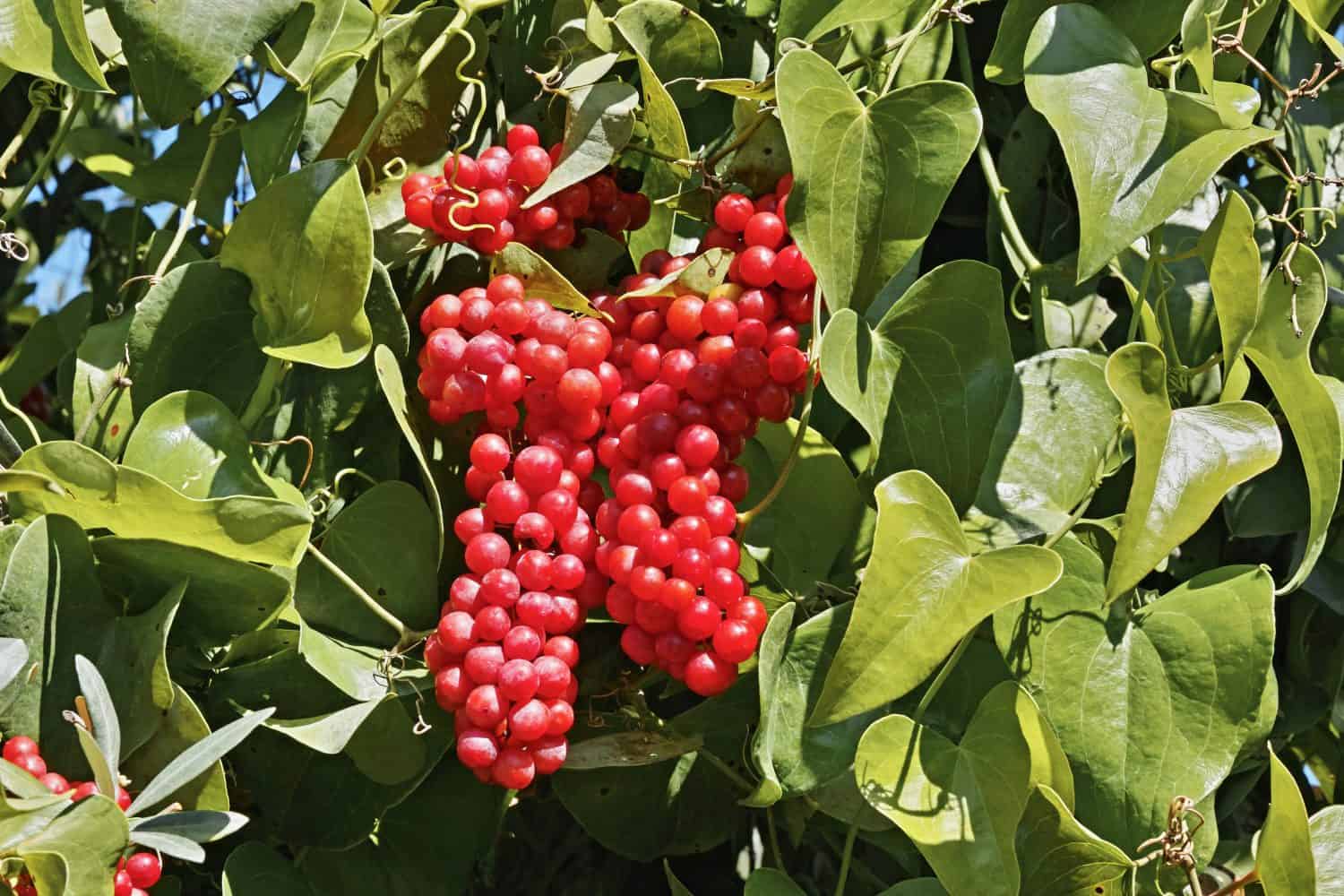
The smilax is the southerner’s favorite choice of holiday greenery and is widely used in DIY Christmas wreaths.
©flaviano fabrizi/Shutterstock.com
Smilax is a versatile, attractive vine with thick, glossy leaves. The two popular varieties of Smilax grown in the U.S. are the Wild Smilax and the Southern Vine. The Southern vines also called Jackson vines are widely used in traditional holiday and wedding decorations in the South. These ‘unarmed vines’ (they are virtually thornless) are easy to weave into wreaths and drape over your front door or porch.
The Smilax wreath may not last you very long but they are well worth the effort.
Yew

Wreaths made of yew are perfect for adding an inviting touch to your home’s decor.
©Kendal Swart/Shutterstock.com
If you want to go the old-fashioned way, yews are another fantastic shrub to use in your wreath. They are thick, lush, and a beautiful dark green and can be easily found in overgrown landscapes or tree dumps.
The bright red berries of yew are especially attractive but also extremely toxic. So, you want to be careful when you display and dispose of wreaths made of yew.
Hydrangea
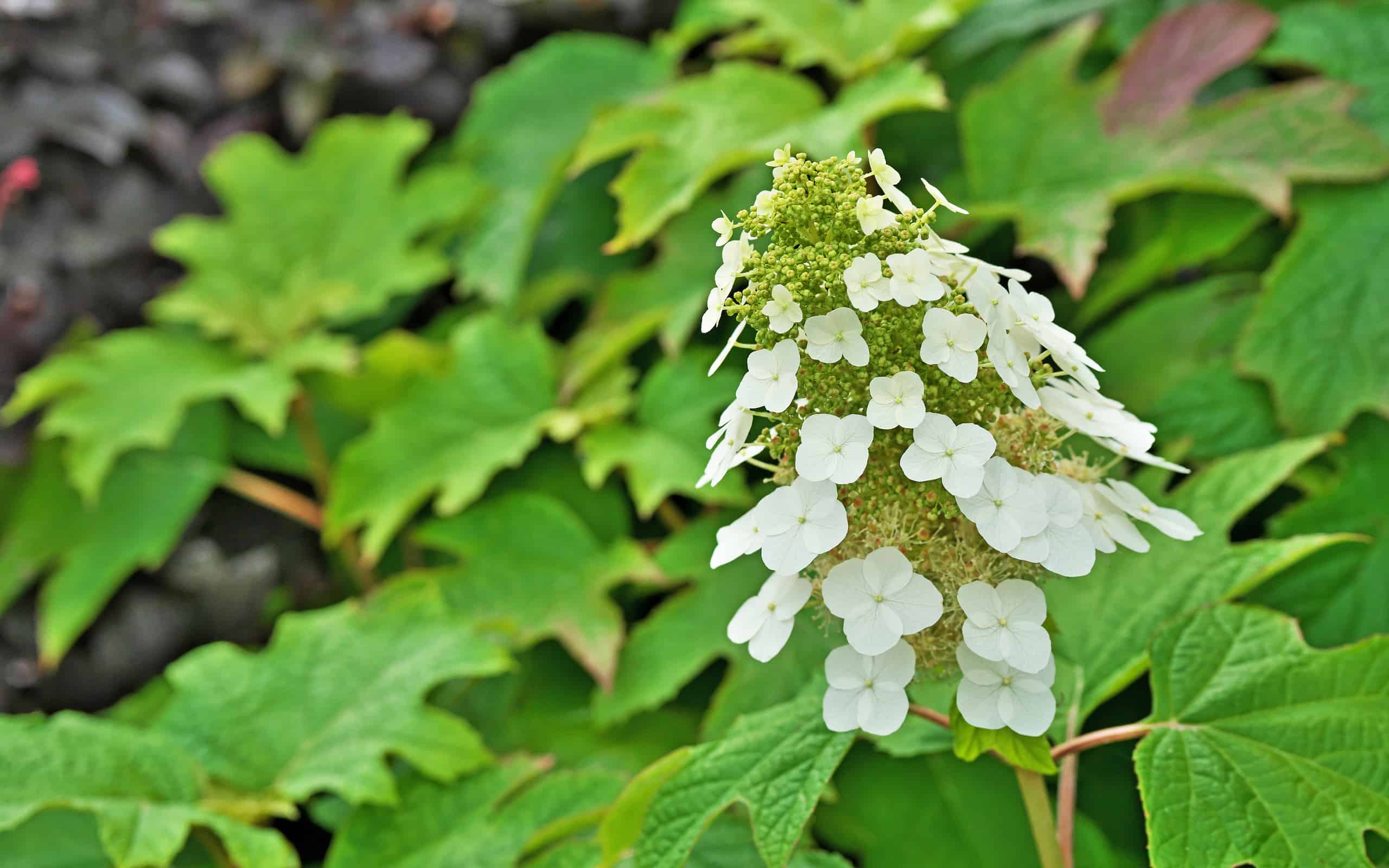
Hydrangea blooms picked straight from the garden are a great way to add personality and texture to your DIY Christmas wreaths.
©igaguri_1/iStock via Getty Images
If you are looking to add something unique to your holiday wreaths, dried hydrangeas from your garden are a great option. Hydrangeas come in beautiful shades of purple, green, and pink and will put on a great show when displayed on a wreath.
These gorgeous shrubs dry out easily and will remain beautiful for a long, long time.
Eucalyptus
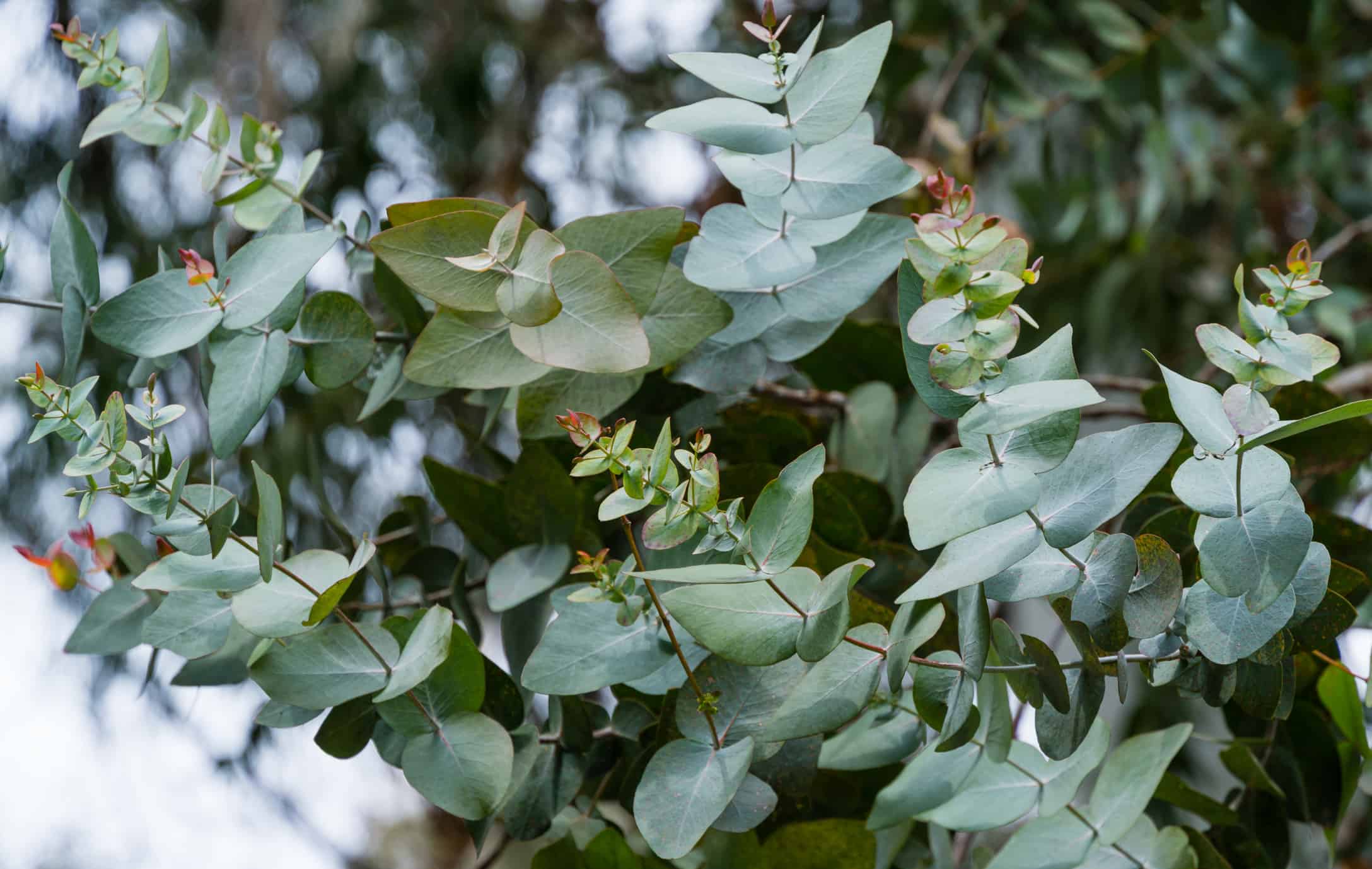
The eucalyptus is a versatile plant that can complement any seasonal decor!
©iStock.com/Marina Denisenko
The beautifully fragrant eucalyptus with its silvery blue-green leaves is another excellent choice of greenery for holiday wreaths. They can last out of water for a very long time and dry out beautifully. Silver dollar, willow eucalyptus, and baby eucalyptus are some of the best types of fresh eucalyptus to use in your Christmas wreaths.
Cypress
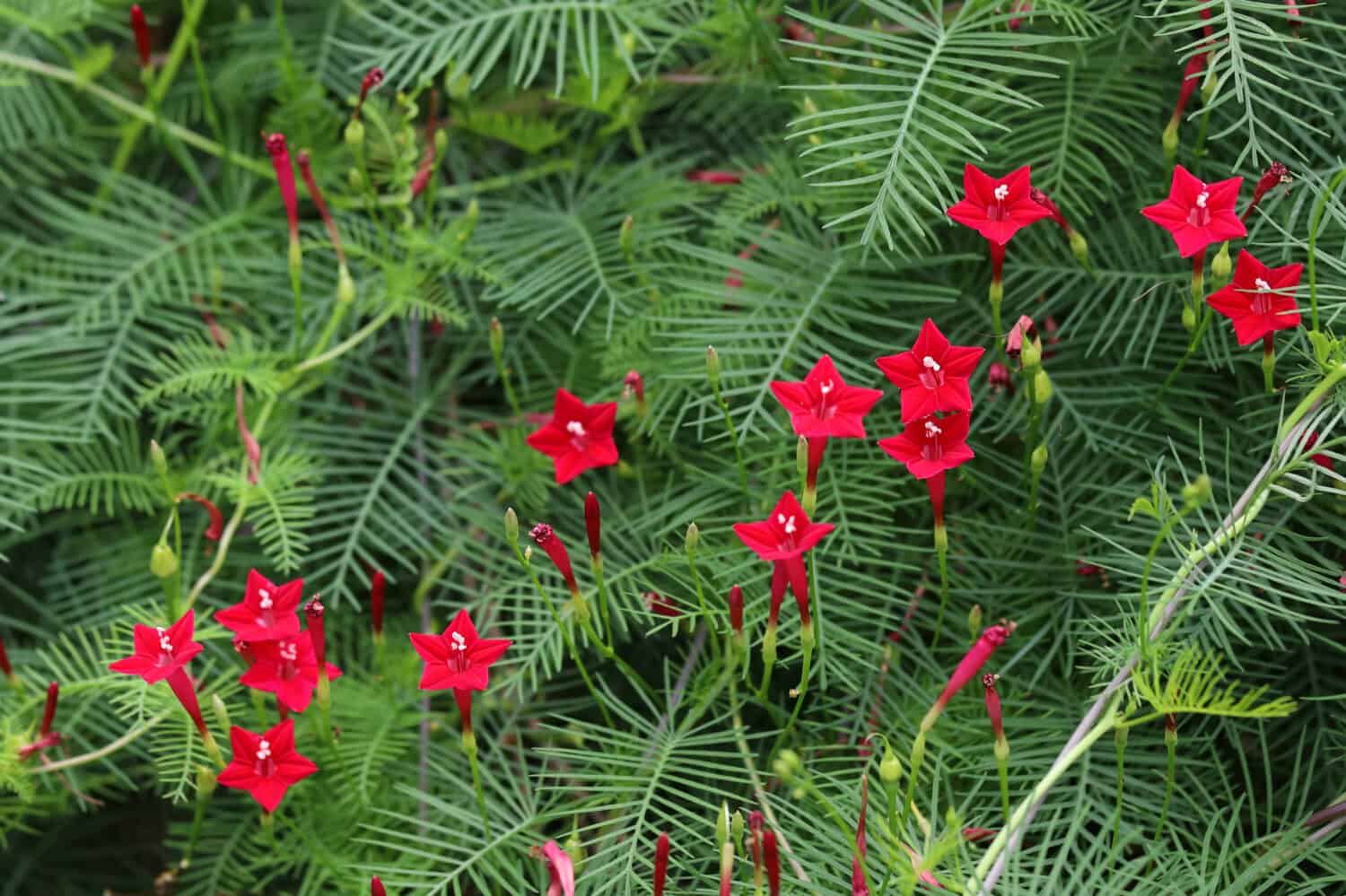
Cypress wreaths are perfect for bringing a fresh, airy note to your holiday decor.
©Passakorn Umpornmaha/Shutterstock.com
Yet another fresh greenery that you can incorporate into your holiday decorating is cypress. The beautiful, lacey, and vibrant foliage of the Leyland Cypress especially, looks great in tabletop decorations and wreaths.
With proper care, most cypress wreaths can brighten your home for several weeks and may even last throughout the holiday season.
Red Twig Dogwood
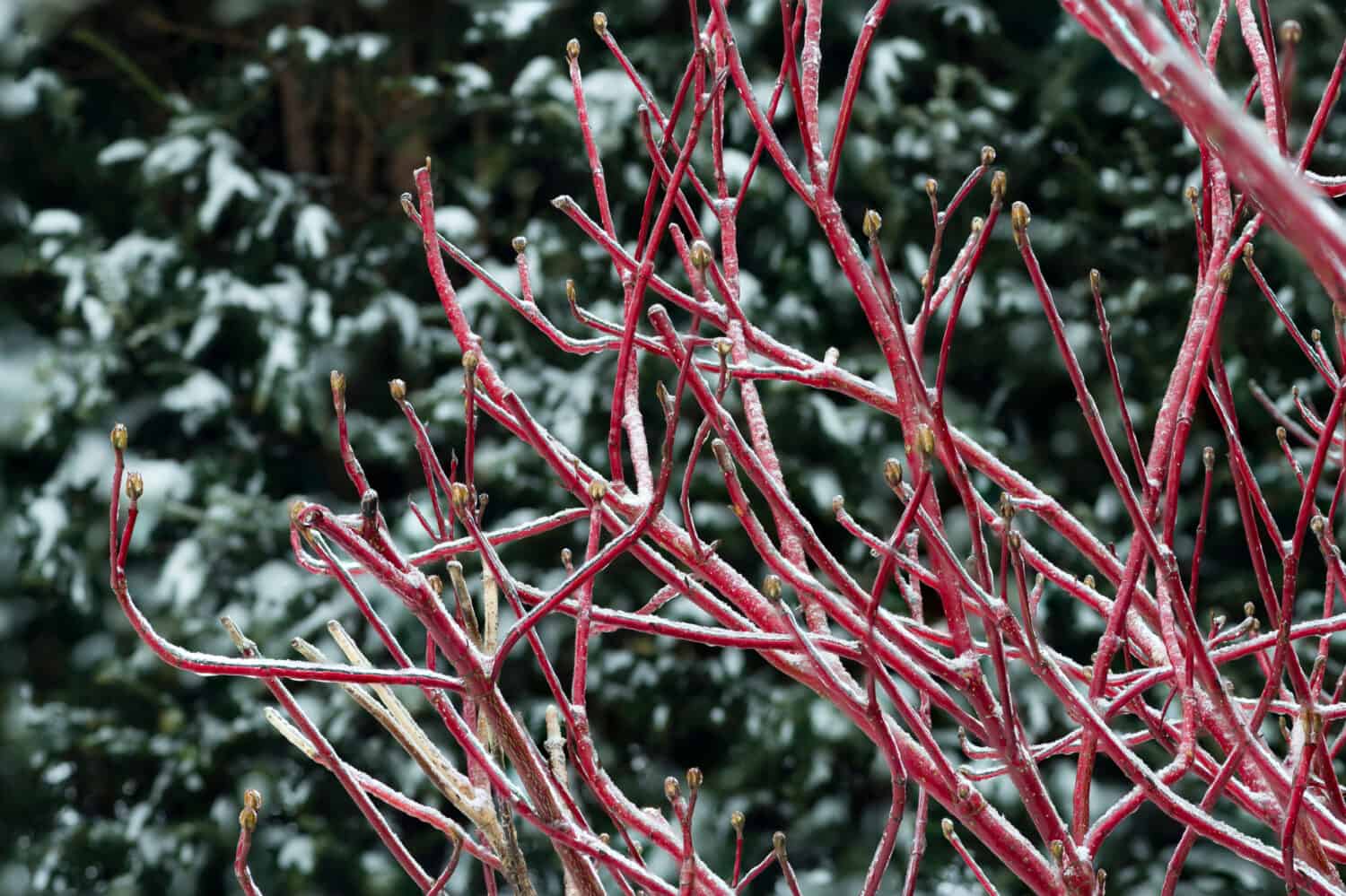
Red twig dogwoods are an old favorite for decorating wreaths.
©Mark Heighes/Shutterstock.com
Another idea for creating your own Christmas wreath is to use red twig dogwood. The red twig dogwood is a wild plant that gets its name from the brilliant red color that its stems develop in the winter. These beautiful branches make wonderful wreaths and can be easily found growing in the wilderness near you.
Red twig dogwoods are quite tough. So, if you find yourself struggling to bend the branches, soak them in warm water first and this will make it easier to weave them into a wreath.
Rosehips
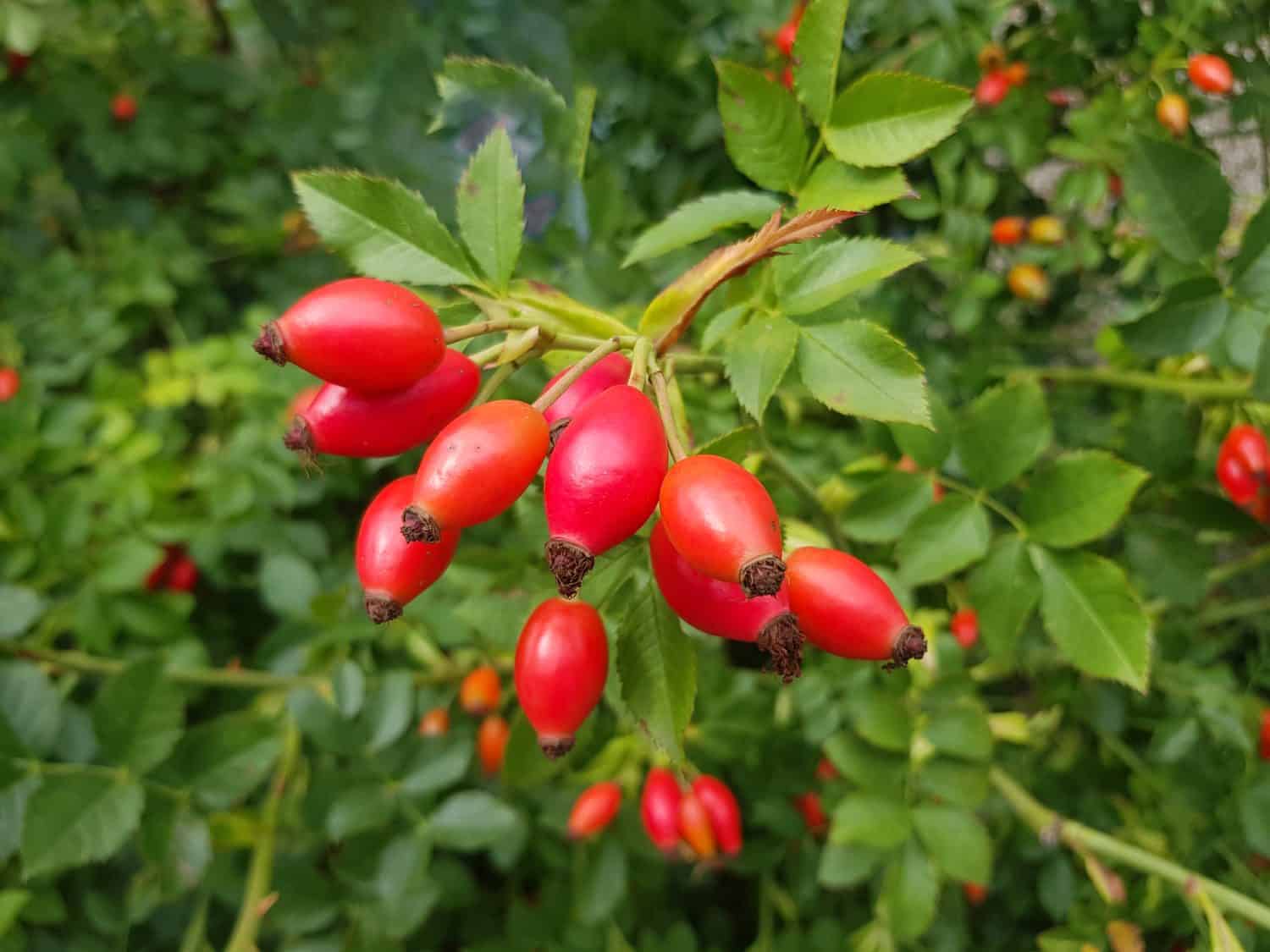
The glossy red rosehips are quite magical and is a cheery addition to any DIY Christmas wreath!
©Fabian Junge/Shutterstock.com
If you want to give your holiday wreath an attractive burst of Christmas color, wild rosehips and berries from your garden should do the trick. Rosehips are generally found in plentiful supply in December and are persistent fruits that will linger on for a long time.
Gather them from your garden and simply arrange them in small bunches or mix them up with foraged evergreens, to give your door a festive look.
The photo featured at the top of this post is © LightField Studios/Shutterstock.com
Thank you for reading! Have some feedback for us? Contact the AZ Animals editorial team.







